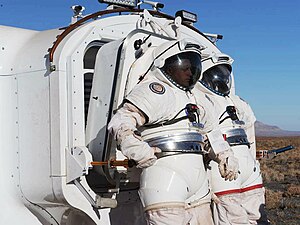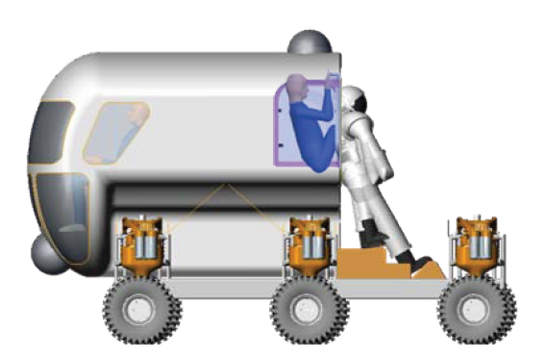Noting this CBSNews item on the probability that flakes from a Teflon seal may contaminate core samples to be gathered with the Martian probe Curiosity rover's sample drill. Curiosity is on its way and due to make a nerve-wracking touchdown near the Gale Crater late on August 5, JPL-time.
Since Teflon molecules are largely carbon, the effect will be to exaggerate results from the tiny onboard analytical lab about how much native carbon is in Martian dirt.
Unintentional interplanetary contamination is an interesting subject because it may be difficult to manage. This post is about half of the problem, back-contamination: offworld material coming back home in a spacecraft, and posing a risk due to chemical or biological activity.
After leaving the theater, ears ringing with the volume, watchers of Prometheus might ponder how leaders of a real expedition might go explore the surface of a planet without bringing back creepy crawlies, particularly the micro-sized ones.
The movie does not set a shining example here. Upon the explorers' return from the first trip out to alien-land, the hangar deck and apparently the crew's quarters are wide open to anything clinging to the suits' outsides. Or to the insides of the suits, given that the explorers doffed their helmets when checking out the alien dome.
In that respect the back-contamination precautions shown in Prometheus are no more advanced than the methods employed during Apollo's manned missions to the lunar surface, which all failed in keeping loose moondust from the astronauts' bodies, or from the capsule when it returned to Earth.
How did dust spread so widely? At the start of each mission, each pair of Apollo astronauts put on their suits, emptied the lunar module of air, and climbed outside to take samples, explore, and (in the later missions), drive their moon buggy around:
At the end of each EVA they climbed back inside the Lunar Module, closed the hatch, and refilled the cabin with oxygen from tanks. They ate, slept, took notes, then went back outside for another activity. What's the problem? Every trip brought more dust into the cabin.
It didn't turn into a crisis, but it could have. Lunar dust turned out to be a safety risk and possibly a health risk as well. Lunar dust is the size of finely-ground flour grains, but sharp-edged, reactive, and greatly more abrasive. Here's a micrograph, from NASA:
It's also highly adhesive in a high-tech way. Note the hook-like protrusions, which grab onto space-suit fabric then dig in; and it carries an electrostatic charge that binds it firmly to smooth surfaces like helmets, camera lenses, and solar panels. Wiping with a cloth only scratches the surface (literally).
Once astronauts started using the moon buggy to get around, the dust problem was totally out of control as soon as a fender came loose. At that point, a rooster-tail of dust sprayed all riders. A NASA controller commented that the suits turned so dark from the buggy rides that it looked like the two men had been playing in a coal bin. Back in the LM cabin, dust worked itself into everything including the astronauts' noses and eyes.
The later expeditions found that after three extended EVA trips on the surface, the suits were played out: moving joints were grinding to a halt, and the dust was wearing through the fabric.
Some dust migrated from the LEM through the service module to the capsule, so a portion came back to Earth in an uncontrolled manner. While lunar dust didn't harbor a killer-interstellar virus, the latest plans call for trips to planets that could harbor life. So serious preventive work is needed before manned trips to Mars, and will be greatly more urgent when we dispatch expeditions to Earth-like planets with signs of life.
One solution could be the suitport:
In the suitport approach, astronauts never bring their suits back into a crew cabin or any occupied space; they climb into them from the back, working out of a shirt-sleeves environment on wheels:
I saw no suitports in Prometheus, but the gadget could be a lifesaver in the real world ... or worlds.



No comments:
Post a Comment